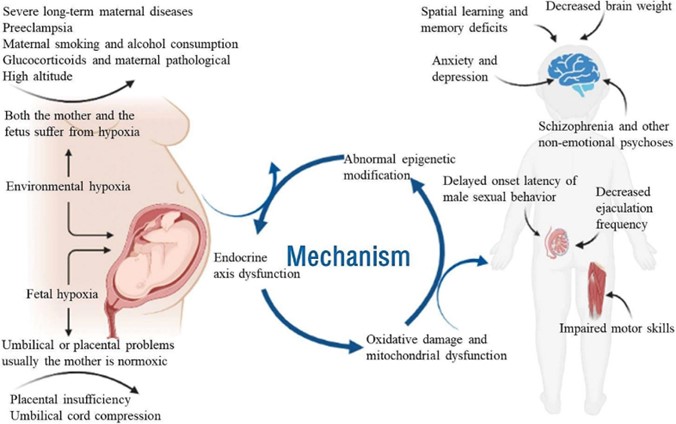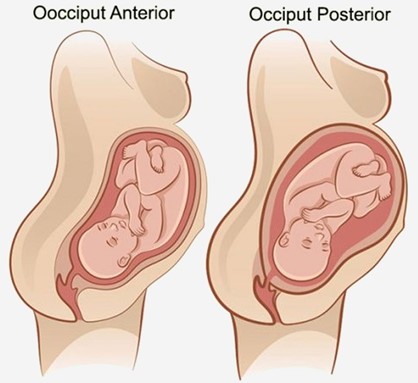A nurse is collecting data from a client who is 3 days postpartum and is breastfeeding. Her fundus is three fingerbreadths below the umbilicus, and her lochia rubra is moderate. Her breasts feel hard and warm. Which of the following recommendations should the nurse give the client?
Wear a nipple shield.
Express milk from both breasts.
Obtain a prescription for an antibiotic.
Apply a heating pad to her breasts.
The Correct Answer is B
Choice A reason: Wear a nipple shield is incorrect, as this recommendation is not indicated for a client who has engorged breasts. A nipple shield is a thin, flexible device that covers the nipple and areola and can help with latch problems, flat or inverted nipples, or sore nipples. However, a nipple shield can also reduce milk transfer, stimulate less milk production, and cause nipple confusion or preference.
Choice B reason: Express milk from both breasts is correct, as this recommendation can help relieve engorgement and maintain milk production. Engorgement is a normal and expected phenomenon that occurs when the milk comes in, usually around 72 to 96 hr after birth. Engorgement can cause breast fullness, tenderness, warmth, and hardness. The nurse should advise the client to express milk from both breasts by breastfeeding frequently and effectively or by using a breast pump or hand expression.
Choice C reason: Obtain a prescription for an antibiotic is incorrect, as this recommendation is not indicated for a client who has engorged breasts. An antibiotic is used to treat mastitis, which is an infection and inflammation of the breast tissue that can cause redness, pain, swelling, warmth, and fever in the affected breast. The nurse should assess the client for signs of mastitis and report any abnormal findings to the provider.
Choice D reason: Apply a heating pad to her breasts is incorrect, as this recommendation can worsen engorgement and cause discomfort. A heating pad can increase blood flow and swelling in the breasts, which can impair milk flow and increase pain. The nurse should advise the client to apply cold compresses or cabbage leaves to her breasts to reduce inflammation and discomfort.

Nursing Test Bank
Naxlex Comprehensive Predictor Exams
Related Questions
Correct Answer is A
Explanation
Choice A reason: Position the client on her side is correct, as this is the first action the nurse should take according to the ABCDE priority framework. Late decelerations are symmetrical decreases in the fetal heart rate that begin after the peak of the contraction and return to baseline after the contraction ends, which indicate uteroplacental insufficiency and fetal hypoxia. Positioning the client on her side can improve blood flow and oxygen delivery to the placenta and fetus by relieving pressure on the vena cava and aorta.
Choice B reason: Elevate the client's legs is incorrect, as this is not a priority action for a client who has late decelerations. Elevating the legs can increase venous return and cardiac output, but it can also reduce blood flow and oxygen delivery to the placenta and fetus by compressing the vena cava and aorta.
Choice C reason: Administer oxygen via face mask is incorrect, as this is not the first action the nurse should take, although it is important to do later. Administering oxygen can increase oxygen saturation and delivery to the placenta and fetus, but it does not address the cause of uteroplacental insufficiency or improve blood flow.
Choice D reason: Increase the infusion rate of the IV fluid is incorrect, as this is not the first action the nurse should take, although it may be indicated later. Increasing the infusion rate of IV fluid can expand blood volume and improve placental perfusion, but it does not address the cause of uteroplacental insufficiency or improve blood flow. The nurse should obtain a provider's order before increasing the IV fluid rate.

Correct Answer is A
Explanation
Choice A reason:
Fetal position is persistent occiput posterior is correct, as this position can cause difficult, prolonged labor and severe backache. The occiput posterior position means that the back of the fetal head is facing the maternal sacrum, which can result in poor alignment and descent, increased pressure on the maternal sacrum and nerves, and increased risk of perineal trauma. The nurse should encourage the client to change positions frequently, use pelvic rocking exercises, apply counterpressure to the sacrum, and administer analgesics as needed.
Choice B reason:
Fetal attitude is in general flexion is incorrect, as this attitude can facilitate normal labor and delivery. The fetal attitude refers to the degree of flexion or extension of the fetal head and limbs in relation to the fetal trunk. General flexion means that the fetal head is flexed on the chest, the arms are crossed over the chest, and the legs are flexed at the knees. This attitude allows the smallest diameter of the fetal head to pass through the birth canal.
Choice C reason:
Fetal lie is longitudinal is incorrect, as this lie can facilitate normal labor and delivery. The fetal lie refers to the relationship between the long axis of the fetus and the long axis of the mother. Longitudinal lie means that both axes are parallel, which allows for either a vertex (head-first) or a breech (butocks-first) presentation.
Choice D reason:
Maternal pelvis is gynecoid is incorrect, as this pelvis can facilitate normal labor and delivery. The maternal pelvis refers to the shape and size of the bony pelvis that affects the passage of the fetus. Gynecoid pelvis is the most common and favorable type for vaginal birth, as it has a rounded inlet, a wide pubic arch, and adequate outlet dimensions.

Whether you are a student looking to ace your exams or a practicing nurse seeking to enhance your expertise , our nursing education contents will empower you with the confidence and competence to make a difference in the lives of patients and become a respected leader in the healthcare field.
Visit Naxlex, invest in your future and unlock endless possibilities with our unparalleled nursing education contents today
Report Wrong Answer on the Current Question
Do you disagree with the answer? If yes, what is your expected answer? Explain.
Kindly be descriptive with the issue you are facing.
